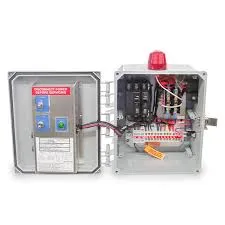Types of Intumescent Strips A Comprehensive Overview
Intumescent strips have become an essential component in fire protection systems, particularly in buildings where safety and compliance with regulations are paramount. These strips serve a critical role in passive fire protection by expanding when exposed to high temperatures, thereby sealing gaps and preventing the passage of smoke and flames. This article aims to explore the various types of intumescent strips, their applications, and benefits.
What are Intumescent Strips?
Intumescent strips are made from materials that undergo a chemical reaction when subjected to heat. Typically composed of graphite, these strips can swell significantly, sometimes up to 50 times their original thickness. This expansion creates a barrier that helps to contain fire and smoke within a specific area, thereby providing vital additional time for evacuation and minimizing structural damage.
Common Types of Intumescent Strips
1. Door Intumescent Strips These are specifically designed to be installed in fire-rated doors. They are available in various sizes and can be applied along the edges of the door or incorporated within the door frame. When exposed to flames, these strips expand to cover any gaps, thus preventing fire and smoke from penetrating through the door.
2. Window Intumescent Strips Window frames are vulnerable points in a building's fire defense. Window intumescent strips are installed around window frames. They are usually designed to match the aesthetics of the window while providing a crucial fire seal. Upon exposure to heat, these strips expand to block any potential fire intrusion through the window areas.
3. Ventilation Intumescent Strips Typically used in HVAC systems, ventilation intumescent strips are designed to seal off ductwork and air vents in case of a fire. These strips ensure that fire does not spread through air circulation systems, thereby enhancing the overall safety of the building.
4. Partition Intumescent Strips These strips are used in wall partitions, particularly those that separate different fire compartments within a building. They seal the joints and edges of partition walls, reducing the spread of fire and smoke from one compartment to another.
5. Electrical Intumescent Strips Electrical installations can create potential fire hazards, making it essential to protect wiring and conduits. Electrical intumescent strips are installed around electrical outlets, junction boxes, and conduits. When exposed to flames, they expand to seal off these areas, preventing the spread of fire along electrical pathways.
types of intumescent strips

6. Perimeter Intumescent Strips These strips are used in conjunction with various types of openings, including doors and hatches. They are designed to provide a continuous fire seal along the perimeter of these openings, ensuring no gaps are left exposed.
Benefits of Intumescent Strips
The use of intumescent strips offers numerous benefits that enhance overall fire safety in buildings. Some of the most notable advantages include
- Enhanced Fire Resistance By sealing gaps and openings, intumescent strips significantly slow down the spread of fire and smoke, providing critical time for evacuation and reducing the potential for injury.
- Cost-Effective Solution Intumescent strips are a cost-effective way to meet fire safety regulations without the need for extensive modifications to existing structures.
- Minimal Aesthetic Impact These strips can be designed to blend seamlessly with existing installations, ensuring they do not detract from the building's design.
- Environmental Considerations Many intumescent materials are non-toxic and environmentally friendly, making them a safer choice for both building occupants and the environment.
Conclusion
In conclusion, intumescent strips represent a vital component of modern fire protection systems. Their ability to expand and seal gaps during a fire emergency makes them an invaluable asset in mitigating fire risks. With various types designed for specific applications, these strips help ensure compliance with fire safety regulations while providing peace of mind. As construction practices evolve, and the need for enhanced safety continues to grow, the role of intumescent strips in fire protection becomes increasingly significant. Investing in quality intumescent solutions can ultimately save lives and properties, underscoring their importance in building design and safety planning.
-
XIANGFAN Rubber Tape-Ultimate Solutions for All Your Insulation NeedsNewsJun.24,2025
-
XIANGFAN Rubber Tape-Protection for Industrial and Residential ApplicationsNewsJun.24,2025
-
XIANGFAN Rubber Tape: Superior Safety and Sealing for Demanding EnvironmentsNewsJun.24,2025
-
XIANGFAN Rubber Tape: Reliable Solutions for Every Electrical ChallengeNewsJun.24,2025
-
XIANGFAN Electrical & Industrial Tape: Powering Reliability Across IndustriesNewsJun.24,2025
-
XIANGFAN Electrical & Industrial Tape: Excellence in Every ApplicationNewsJun.24,2025
